With more than 68 million individuals in the US alone, Gen Z is emerging as a dominant consumer demographic.
To reach this demographic more effectively, you should continually innovate and adapt your marketing strategies.
Here, we are exploring facts, statistics, and valuable insights useful for marketing to Gen Z, covering:
- Important stats
- Shopping behaviour
- Characteristics & values
- Impactful marketing strategies
and more to better communicate with this important demographic.
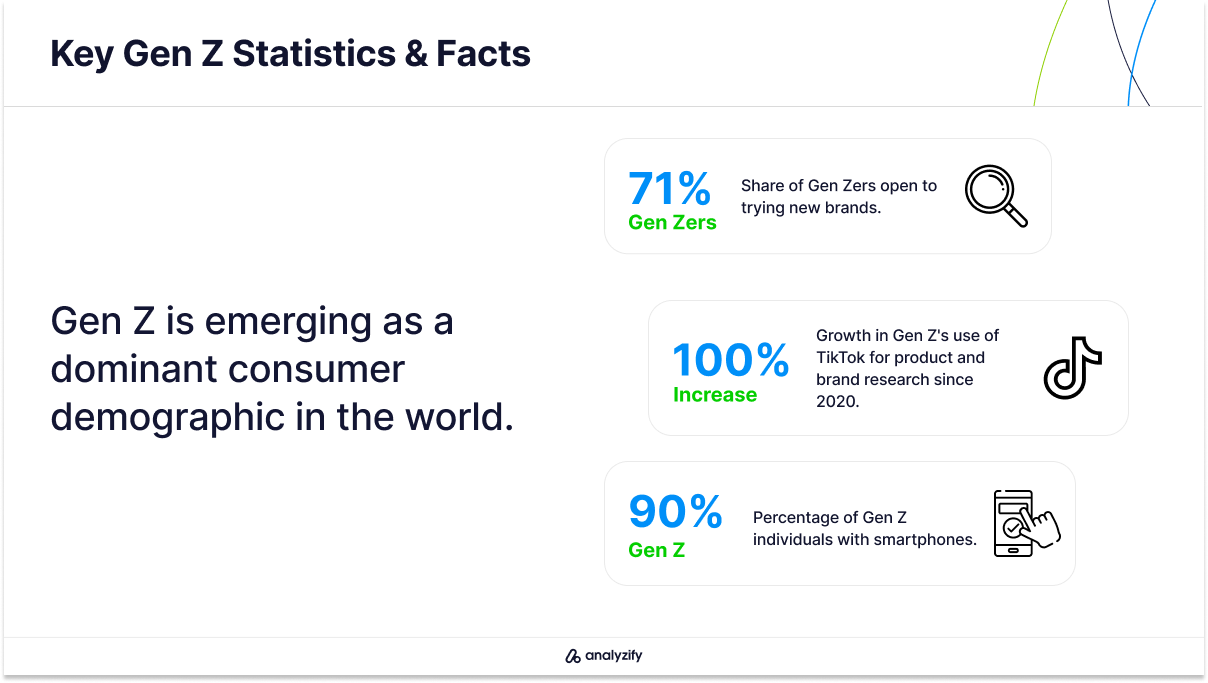
Getting to Know Them: Essential Gen Z Statistics & Facts
When it comes to marketing to Gen Z, it’s essential to reconsider the consumer funnels of the old world.
You need to understand their unique preferences, characteristics, and shopping behaviours.
For example, you need to grab their attention and keep them engaged quickly - as their attention span is around 8 seconds.
However, this is not the only insight you might need to tailor your marketing strategies and engage with Gen Zers to drive conversion.
Here are the most important Gen Z statistics and facts:
- Gen Z accounts for slightly over 20% of the US population.
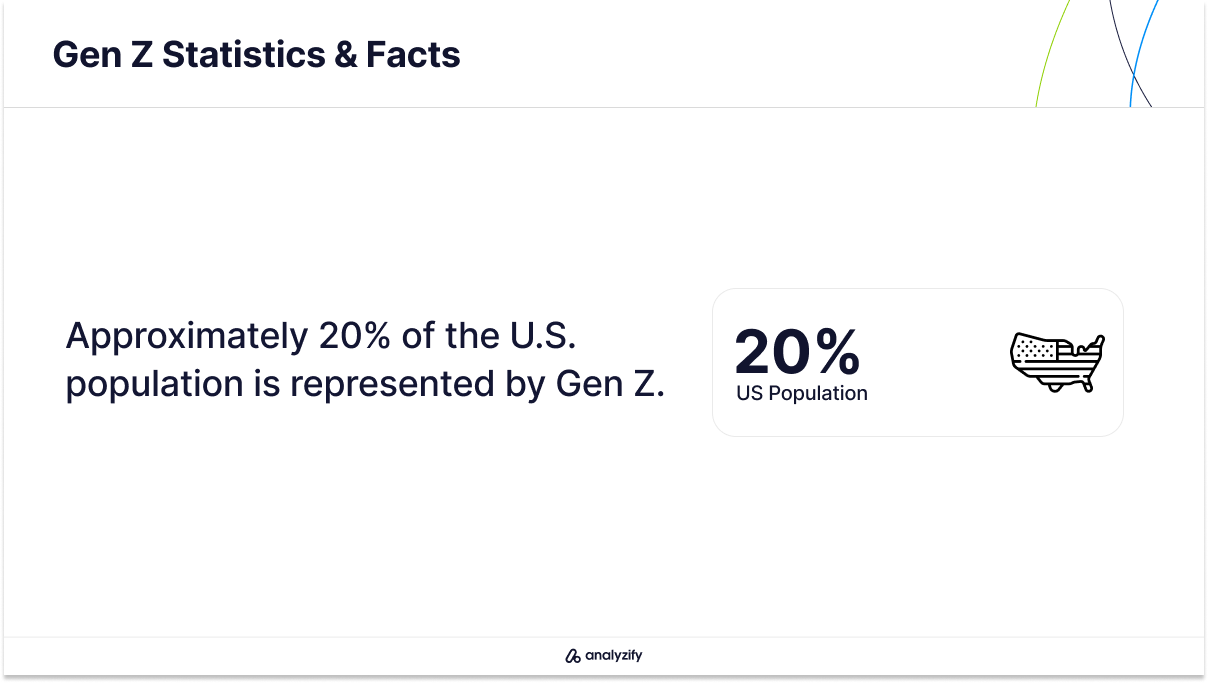
- More than 90% of Gen Z individuals own a smartphone.
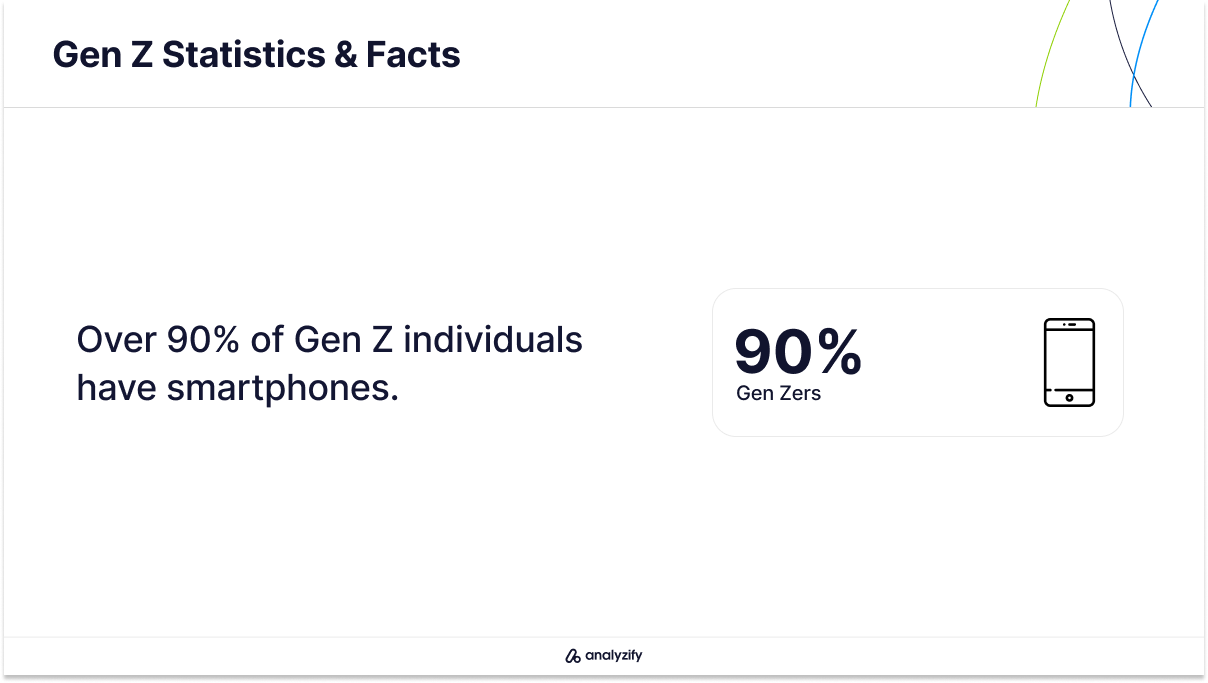
- Over 50% of Gen Z spends at least 4 hours daily on social media.
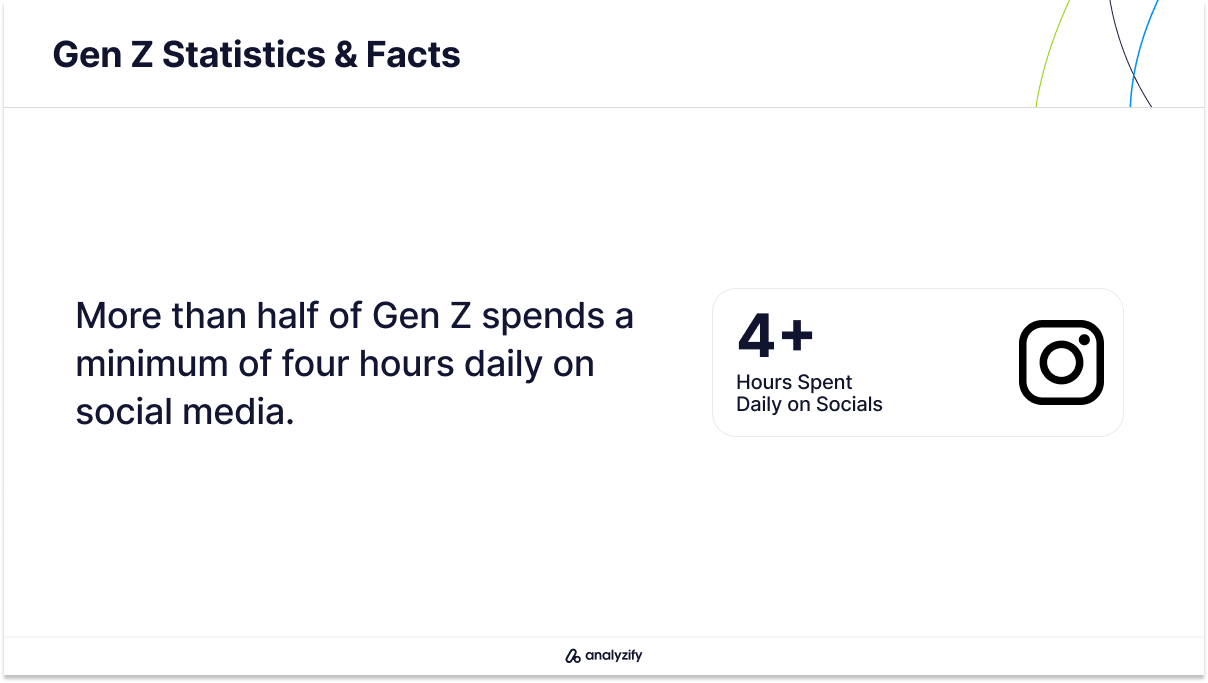
- Since 2019, the proportion of lower-income Gen Z has decreased by 5% in Europe and 24% in North America.
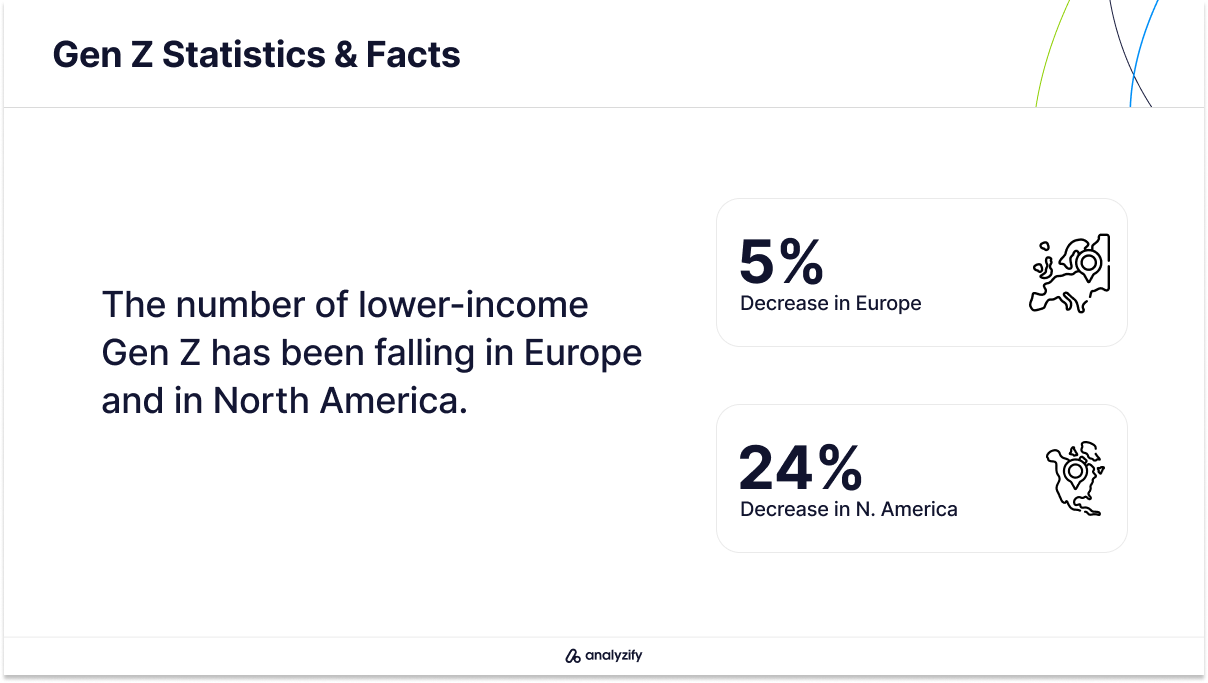
- YouTube engages 88% of Gen Z users.
- A significant 77% of Gen Z values work-life balance highly.
- Gen Z ranks as the most diverse generation in terms of race and ethnicity.
- Nearly 33% of Gen Z reports feeling financially insecure.
- Globally, Gen Z makes up approximately 26% of the world’s population.
- The UK’s Gen Z population is estimated at 12.7 million.
- The average annual income for Gen Z in the UK ranges from £20,000 to £29,000.
- In the US, 40% of consumers are expected to be Gen Zers in the near future.
- Around 44% of Gen Z live with parents who hold a college degree.
Gen Z Online Shopping Behaviour in Numbers
Today, Gen Z’s shopping habits are shaping the future of ecommerce.
As digital natives, they set online shopping trends and redefine expectations easily.
Here, we take a look at Gen Z’s online shopping behavior to see how their preferences are influencing the marketplace.
Once you understand the data here, you can tailor your marketing strategies accordingly to engage this dynamic demographic.
Let’s explore some online shopping behavior statistics for marketing to Gen Z:
- 39% of female Gen Z consumers are more likely to purchase a product after viewing it on TikTok.
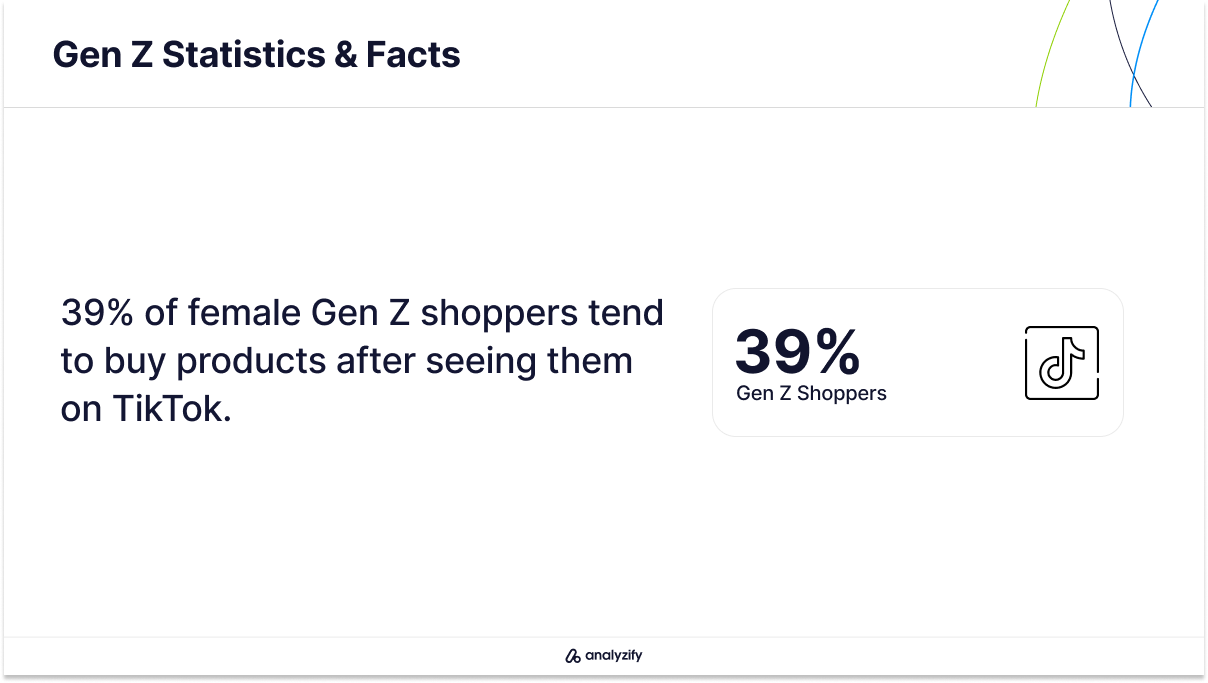
Explore More: Discover latest Tiktok statistics to learn about the platform’s current impact.
- 71% of Gen Z express a keen interest in discovering new brands.
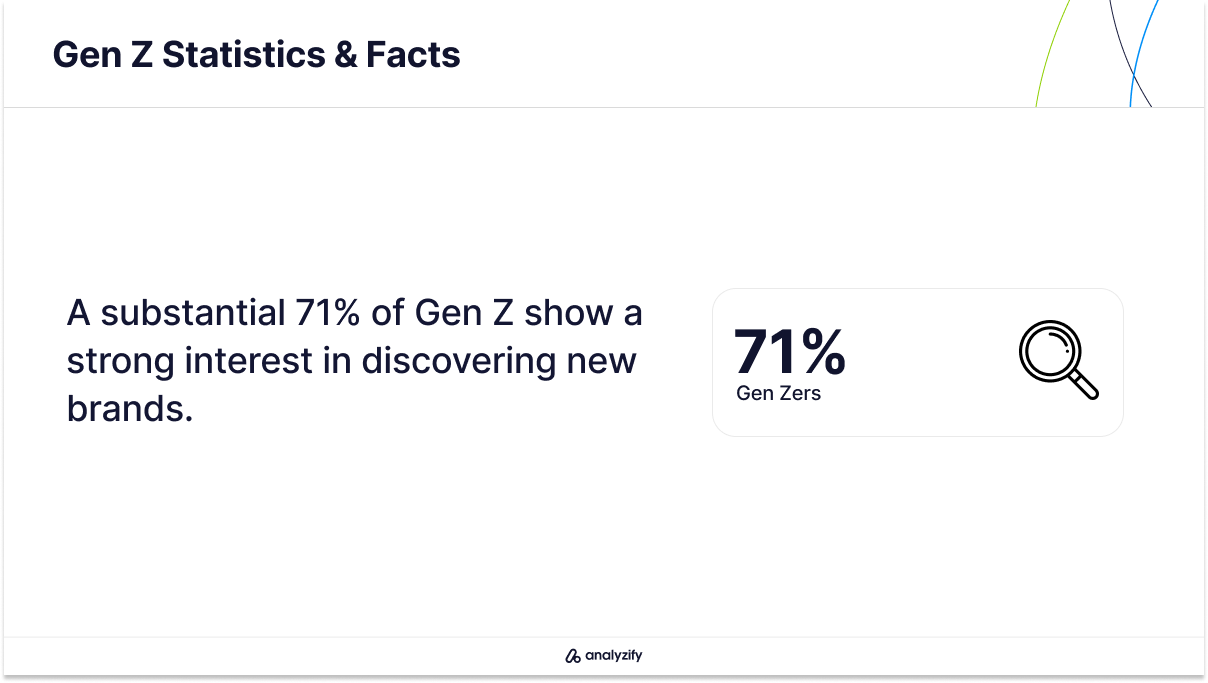
- 55% of Gen Z find that exclusive content like behind-the-scenes videos or tutorials enhances a brand’s appeal.
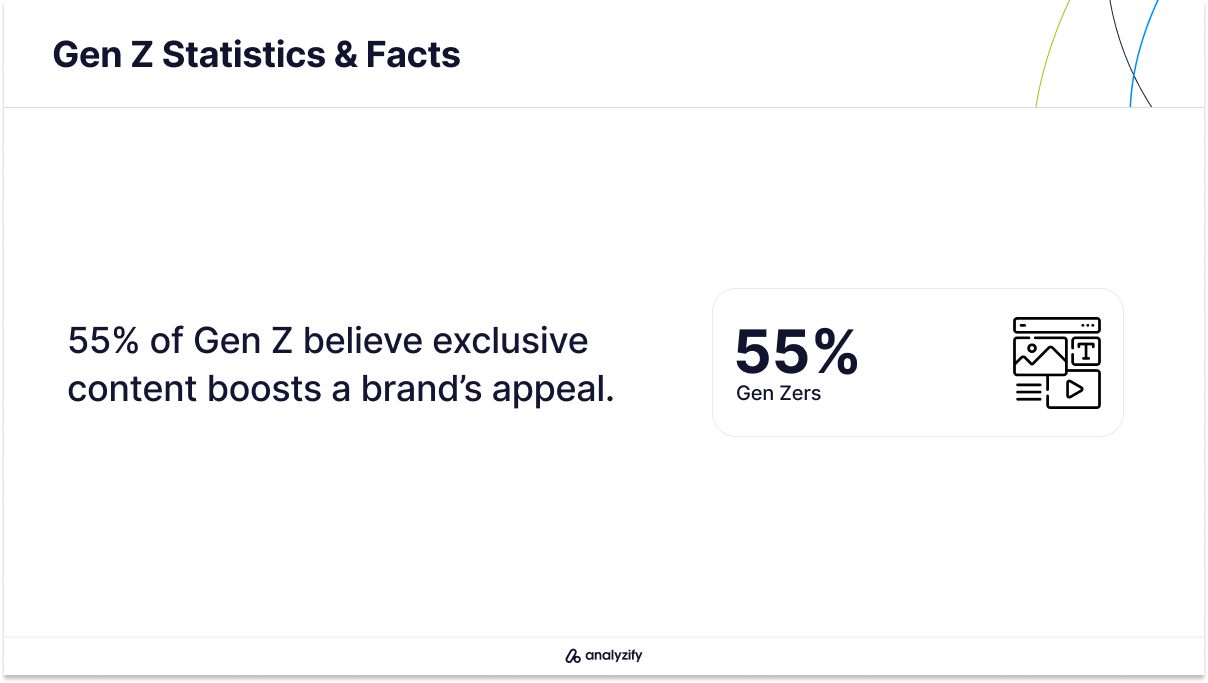
- Nearly 50% of Gen Z compare prices on Amazon before finalizing a purchase.
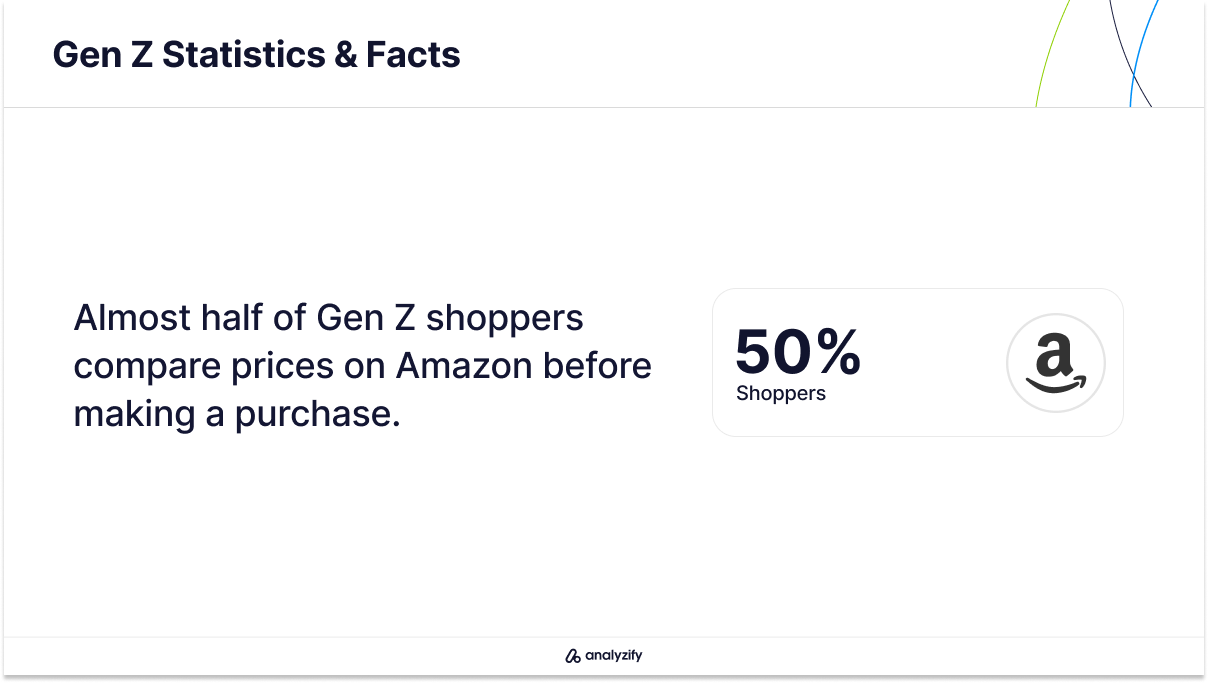
- 46% of Gen Z are deterred from buying products if they cannot access independent reviews or information.
- 57% of Gen Z discover new brands and products through YouTube.
- 56% of Gen Z believe that brands frequently misrepresent their products or services.
- More than 60% of Gen Z first seek secondhand options before purchasing new items.
- 21% of Gen Z become aware of new products and brands via television advertisements.
- Around 50% of Gen Z globally used search engines to research products before buying in 2023.
Exploring Gen Z Characteristics and Values
When marketing to Gen Z, understanding their characteristics and values is key to developing strategies that work.
For instance, they have a strong commitment to to diversity, mental well-being, and ethical consumption.
These, along with many others, are driving brands to reevaluate and realign their business practices.
Here are crucial Gen Z statistics that reveal what Generation Z truly cares about:
- 60% of Gen Zers believe that increasing racial and ethnic diversity benefits society.
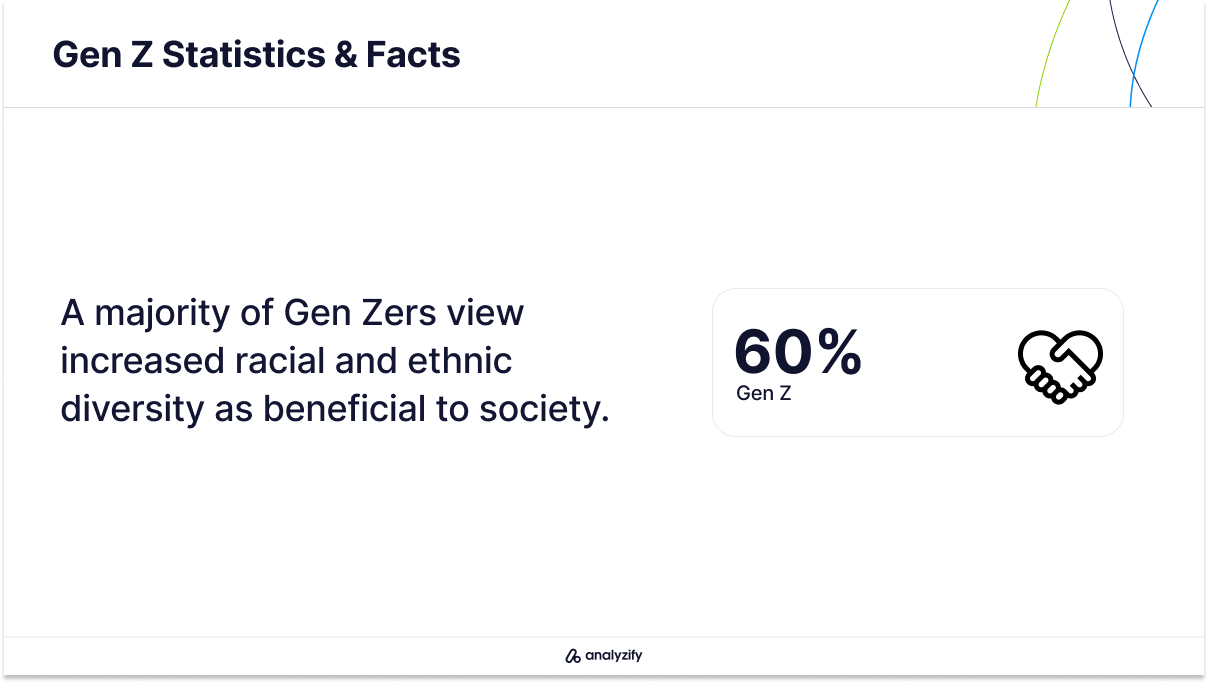
- 70% of Gen Zers prefer to buy from companies they view as ethical.
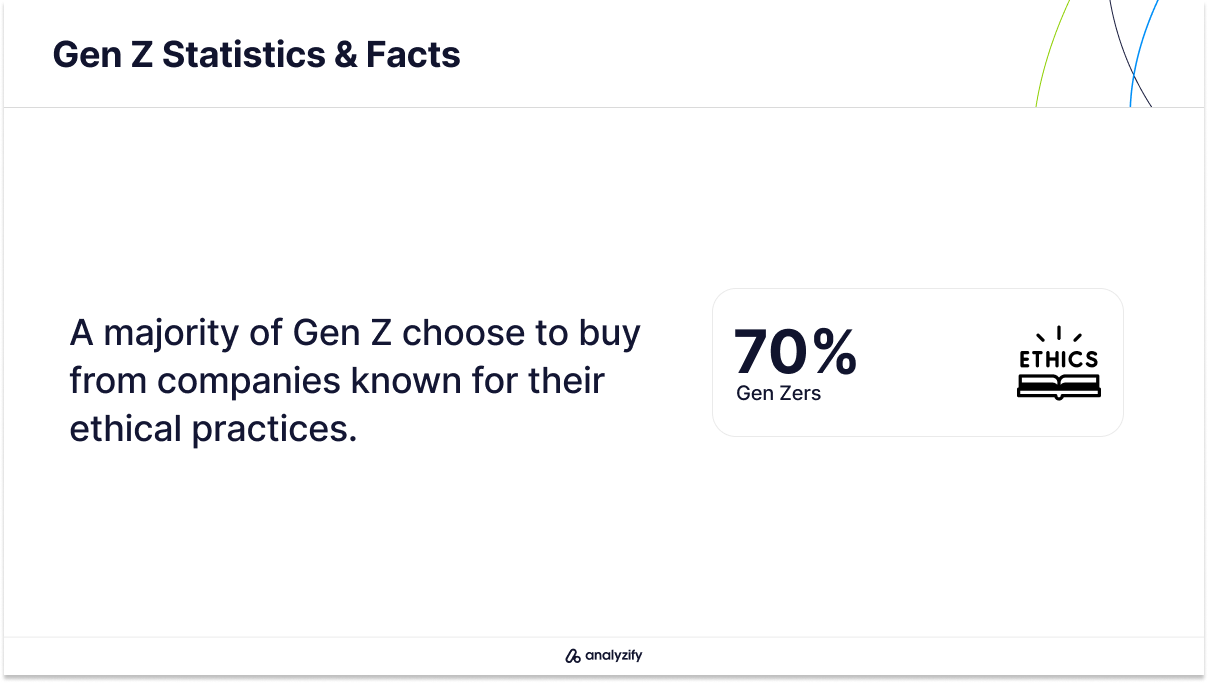
- 63% of Gen Zers consider learning new skills to be important.
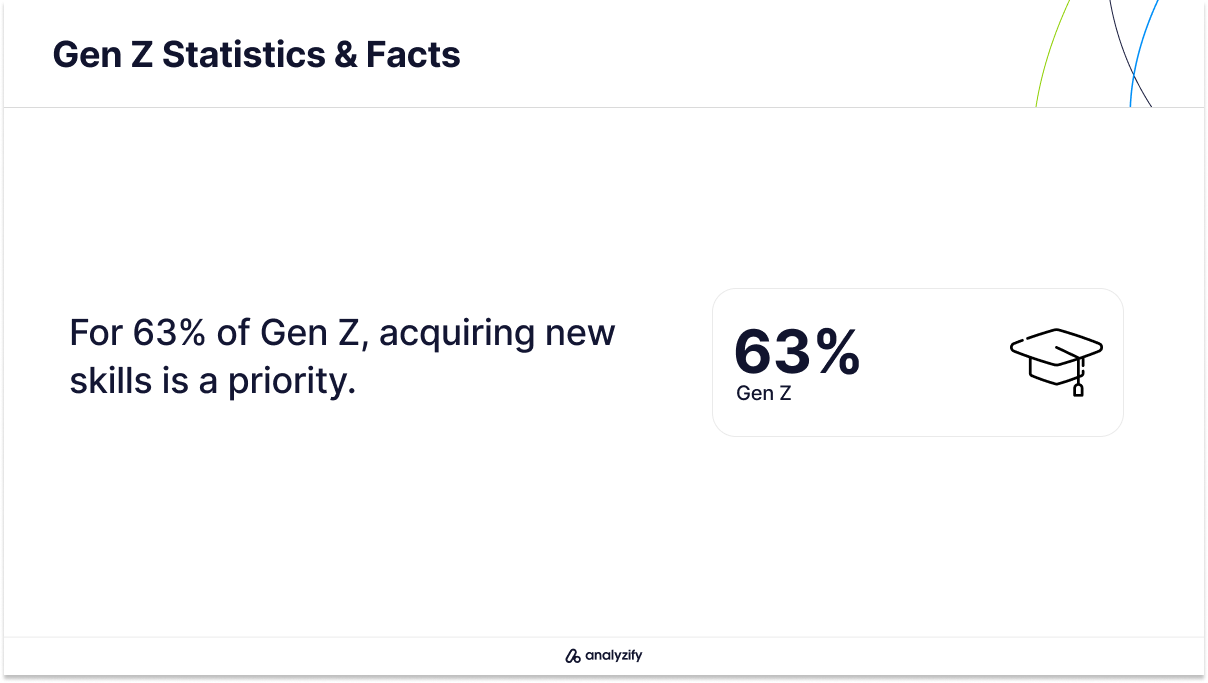
- 45% of Gen Zers are more likely to engage with brands that demonstrate transparency and trustworthiness.
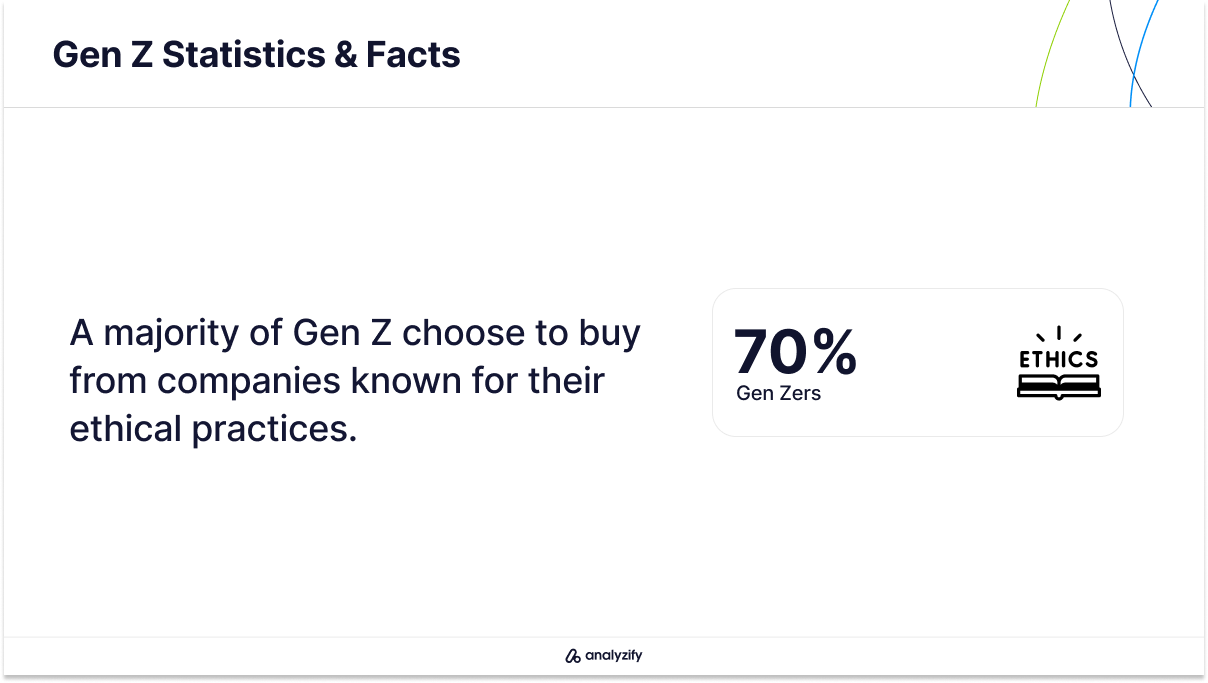
- 90% of Gen Zers think companies should actively address environmental and social issues.
- More than 60% of Gen Zers place high importance on mental health and personal well-being.
- Over half of US Gen Zers believe that the brands they like support mental health initiatives.
- 16% of Gen Z consumers are influenced by a brand’s values and mission in their engagement decisions.
- 41% of Gen Z fall into the early majority category when it comes to adopting new innovations.
- According to a survey, 66% of US Gen Z respondents consider a brand’s sustainability efforts crucial to their purchasing choices.
Role of Social Media in Marketing to Gen Z in 2025
In 2025, social media continues to be highly important in marketing to Gen Z.
Here, we are exploring the most effective channels, content types, and engagement strategies.
The insights may help you create resonant messages that not only capture attention but also foster loyalty among Gen Z consumers.
Let’s take a look:
- 51% of Gen Zs believe that social media influencers are pioneers in creating new trends.
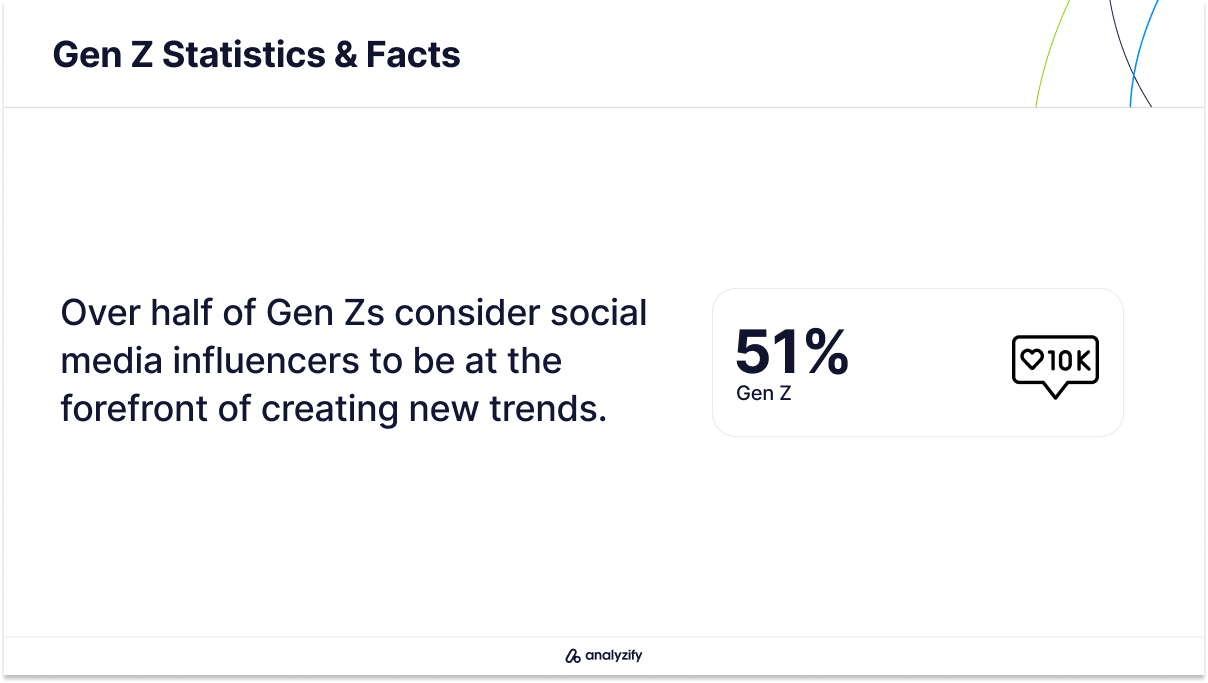
- There has been a more than 100% increase since 2020 in Gen Z using TikTok for researching products and brands.

- 55% of Gen Zs engage more with brands when they follow their social media influencers and listen to their podcasts.
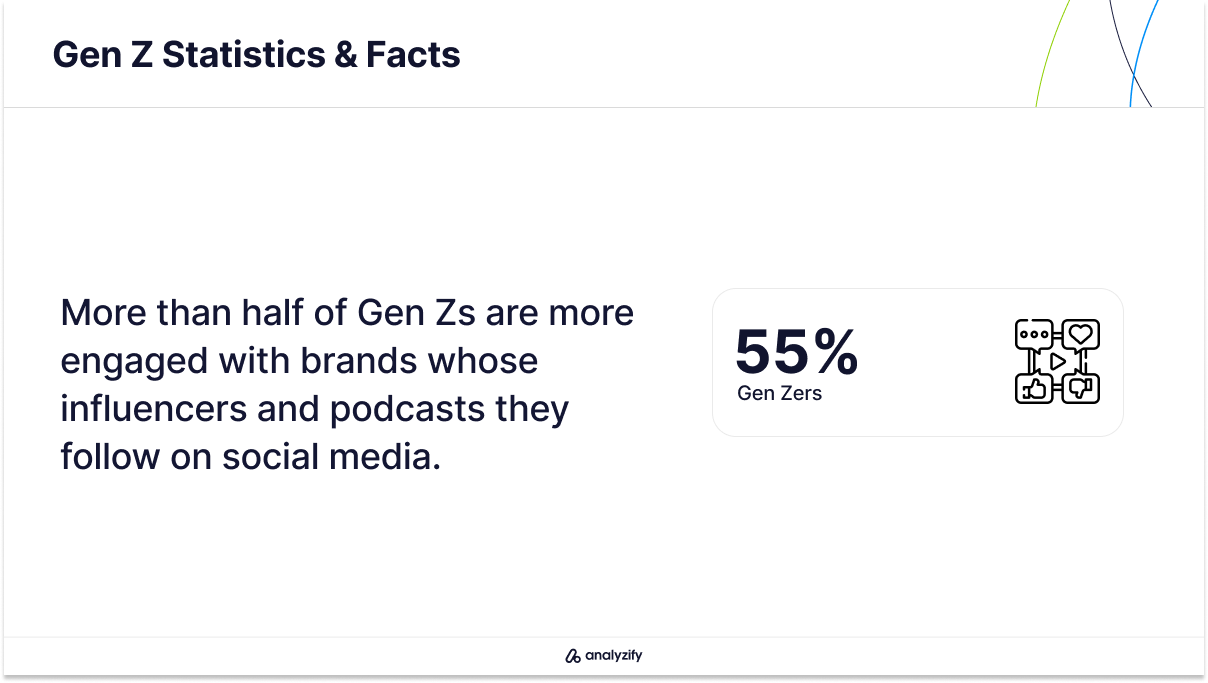
- 30% of Gen Zs globally use social media for inspiration, making them 11% more likely to do so than other generations.
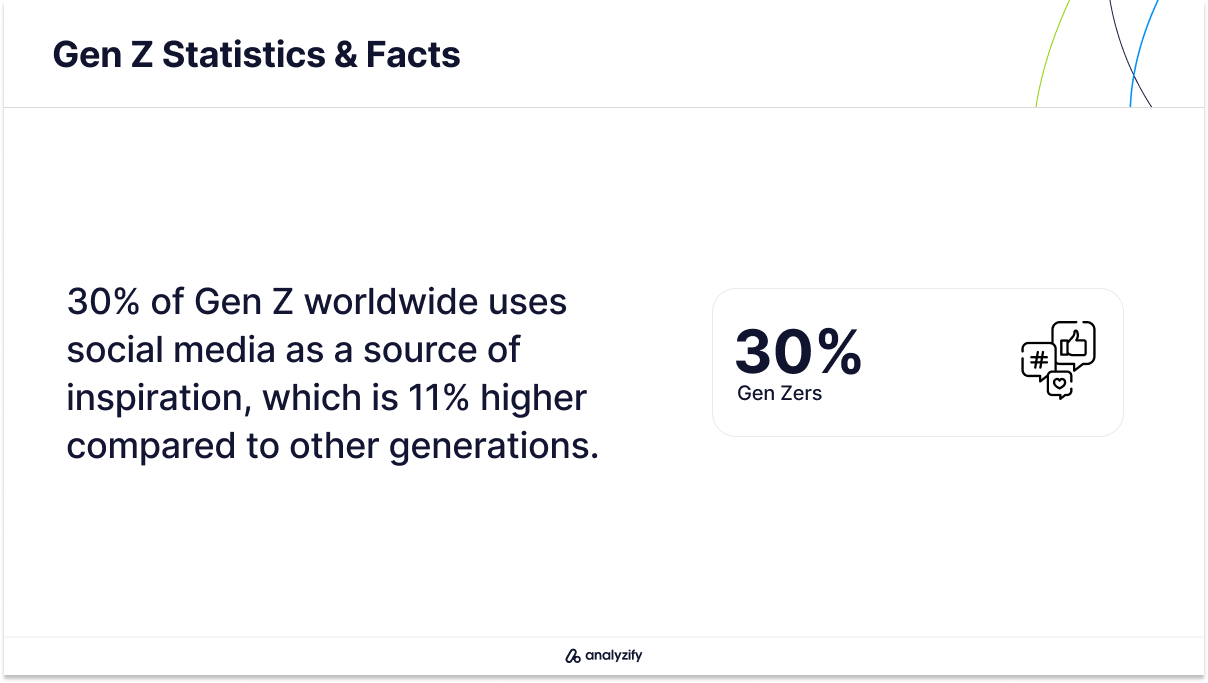
- Half of the Gen Z population trusts algorithms to accurately deliver content and products they desire.
- 77% of US Gen Zs and 79% of millennials look for style inspiration monthly, with nearly half using social media for this purpose.
- 80% of Gen Zs feel they encounter more brand advertisements than any other generation, compared to 73% of millennials.
- Nearly 50% of Gen Zs and millennials show greater interest in ads and products endorsed by their favorite podcasters.
- Gen Zs are 18% more inclined to watch video podcasts compared to other podcast listeners.
6 Gen Z Marketing Strategies You Can Try
Here are some strategies that can work for your business when marketing to Gen Z in 2024:
Embrace Authenticity and Transparency
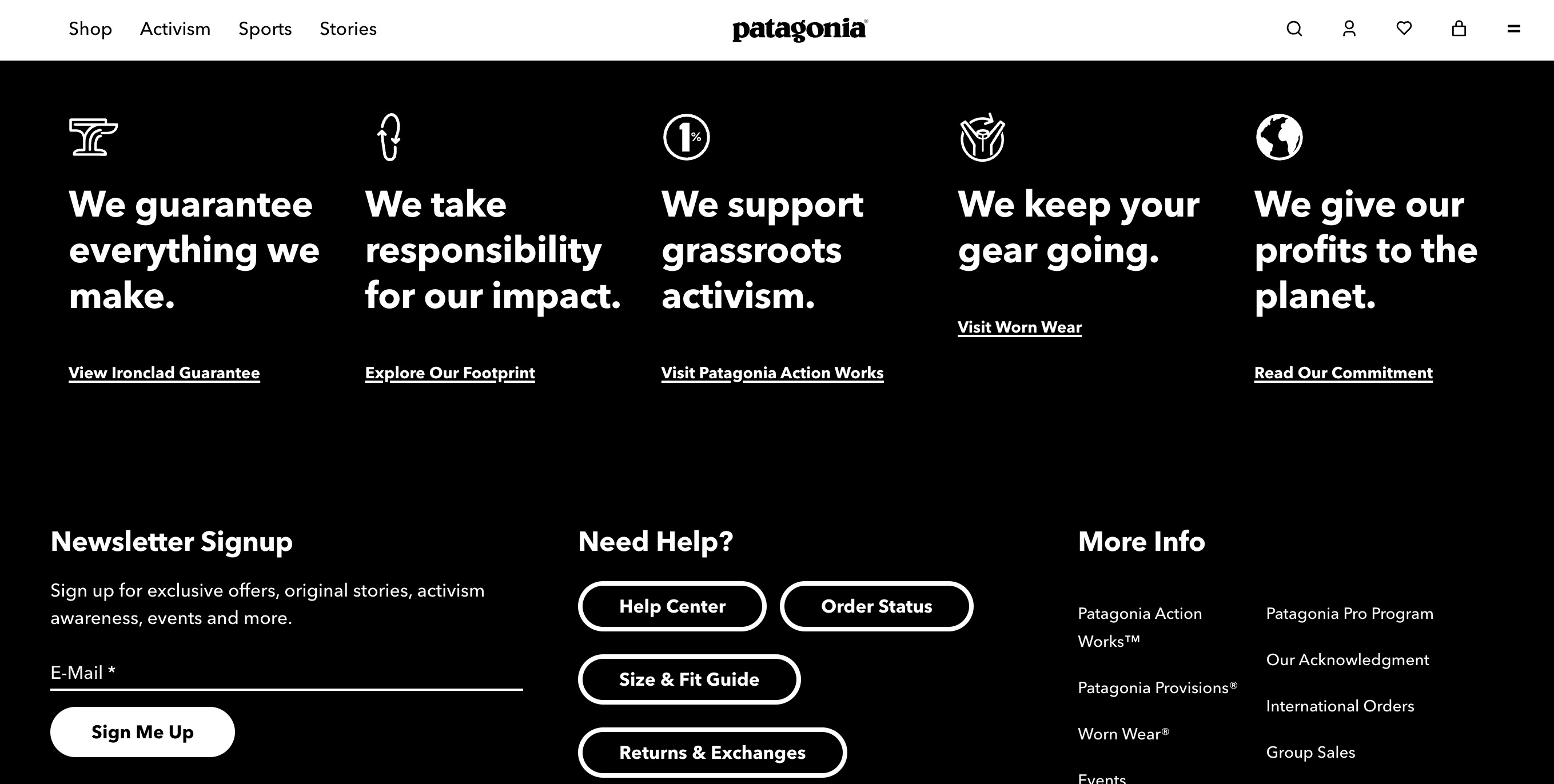
Gen Z values trust and transparency, often looking for brands that are honest about their products and business practices.
How to do that:
Similar to Patagonia’s ‘Ironclad Guarantee,’ ensure your products are backed by a solid promise that builds trust and communicates the quality and durability of your offerings.
Openly share the details of your company’s environmental footprint. This transparency shows responsibility and commitment to sustainability, which resonates with Gen Z’s values.
Like Patagonia’s Action Works, empower and support activism through your platforms. Facilitating ways for customers to participate in grassroots efforts can deepen their connection with your brand.
Encourage the reuse and recycling of your products as seen with Patagonia’s Worn Wear program. This not only reduces waste but also reinforces your brand’s commitment to sustainability.
Highlight how your company contributes to societal or environmental causes. Detailing your commitments, like Patagonia’s dedication to donating profits to the planet, can enhance brand loyalty among consumers who value ethical actions.
Leverage Video Content on Preferred Platforms
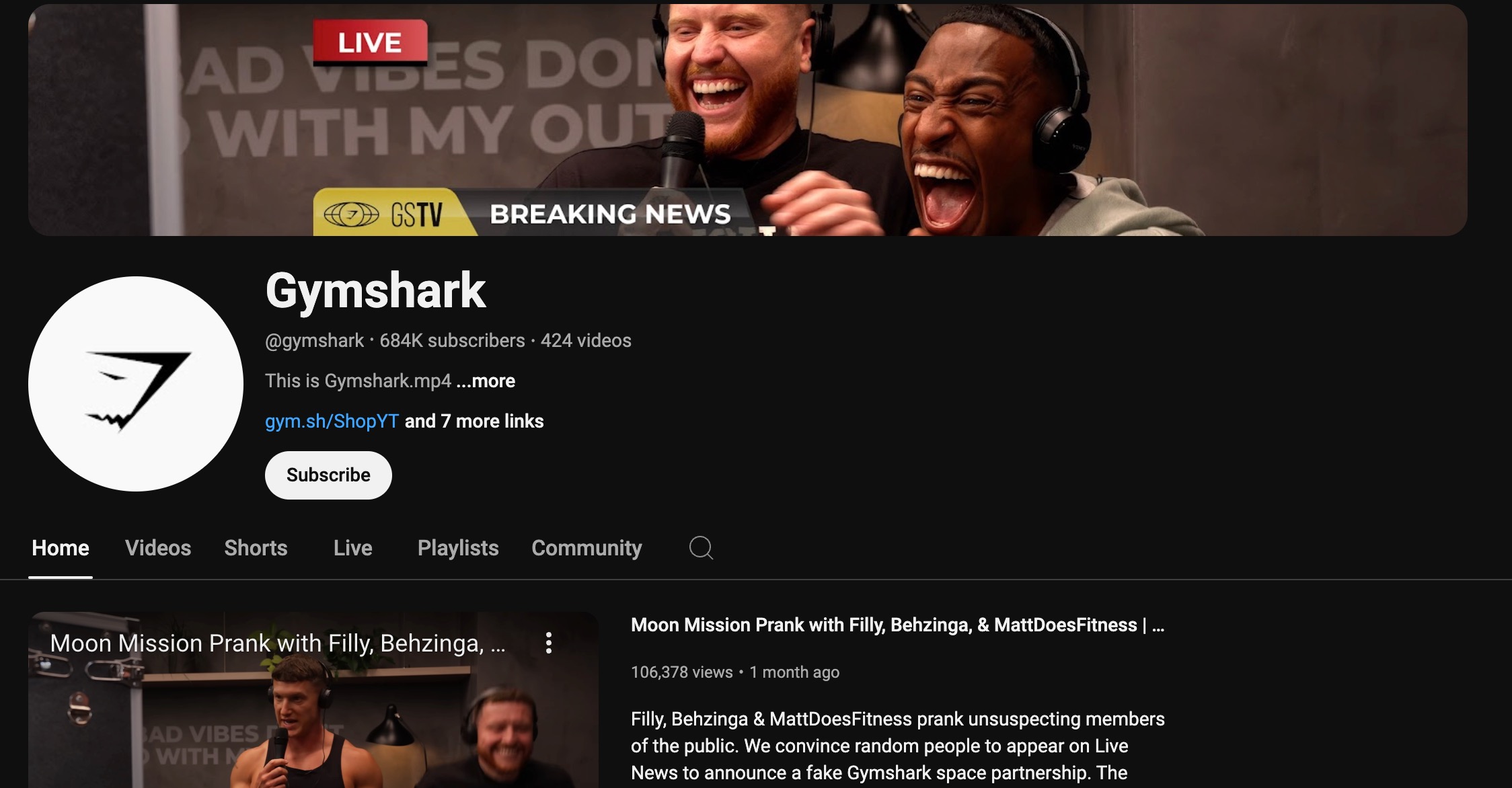
With a significant portion of Gen Z spending time on platforms like YouTube and TikTok, video content becomes a vital engagement tool.
How to do that:
Create engaging, short-form video content tailored for TikTok and YouTube.
Utilize popular Gen Z influencers to showcase your products in action, just like Gymshark.
Offer behind-the-scenes looks, tutorials, or live Q&A sessions to increase brand connection.
Highlight Brand Ethics and Social Responsibility
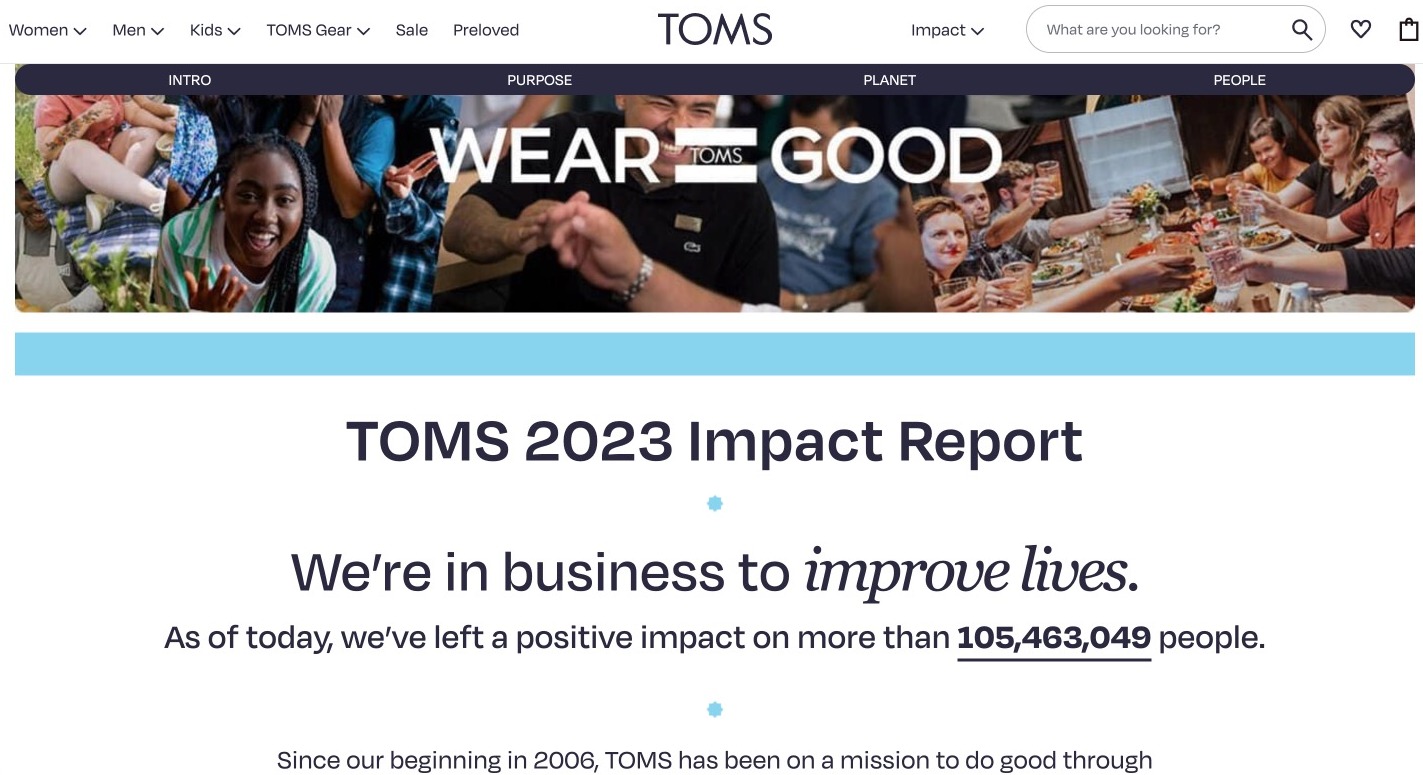
Gen Z consumers prefer to purchase from brands that demonstrate ethical practices and a commitment to social and environmental issues.
How to do that:
Provide detailed impact reports like TOMS’ 2023 Impact Report, which quantifies the influence of purchases, showing customers exactly how their support contributes to societal benefits.
Demonstrate how your business adapts its mission to address current global issues. TOMS shifted from a One for One® model to focusing on mental health support, showing responsiveness to evolving societal needs.
Outline how partnerships with various organizations enhance your impact. Detail the specific areas these partnerships target, as TOMS does with mental health, access to opportunity, and ending gun violence.
Highlight any relevant certifications that reinforce your commitment to social and environmental responsibility, such as B Corp certification.
Mention efforts to continuously improve and recertify, as TOMS plans with their B Corp status, showing a commitment to constant betterment in business practices.
Offer Customized and Personalized Experiences
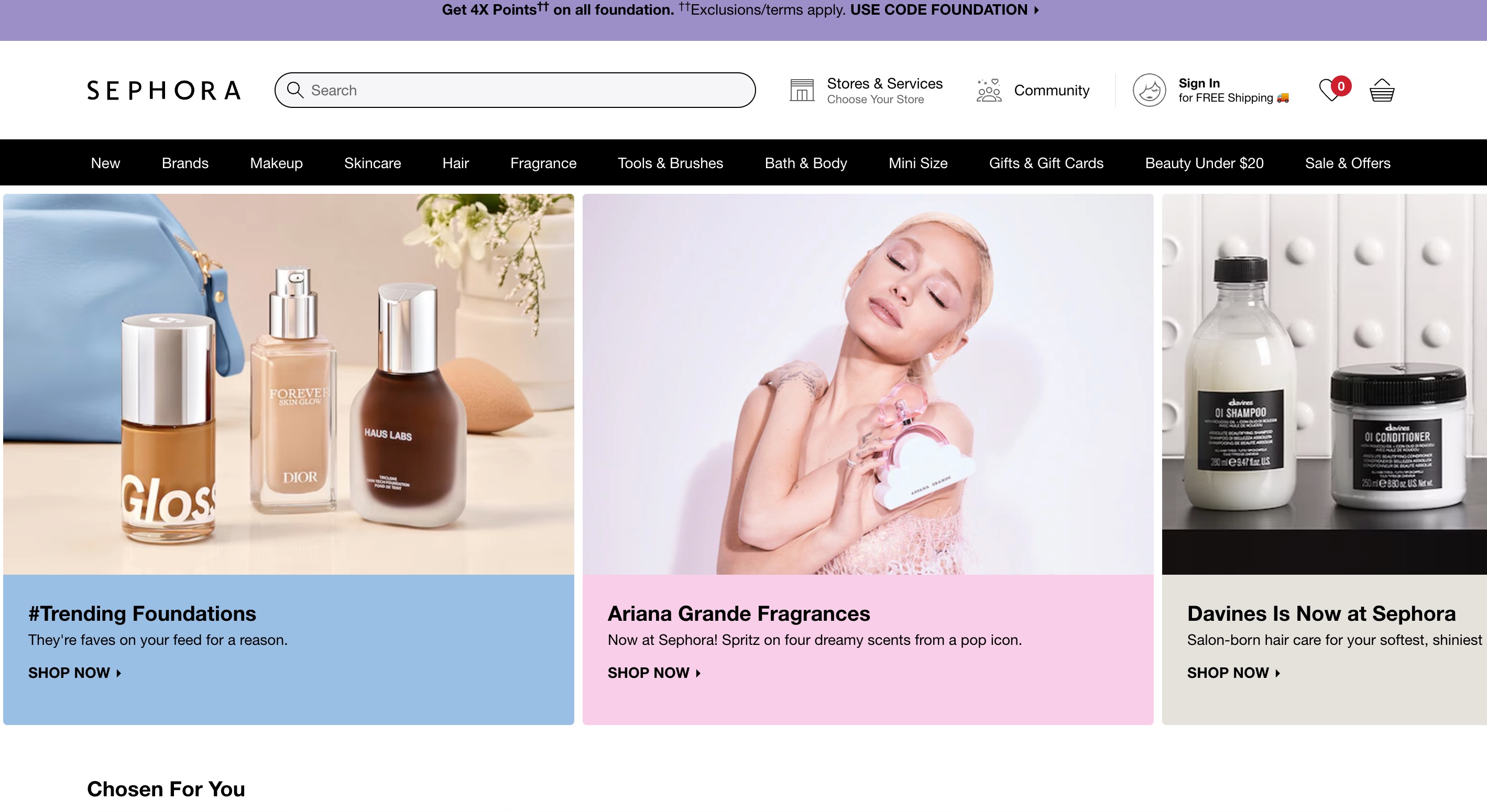
Personalization is key for Gen Z, who are accustomed to digital environments that tailor content and recommendations.
How to do that:
Offer product recommendations based on browsing and purchase history.
Create a loyalty program that rewards customers while also gathering valuable data about their preferences and buying habits. Use this data to personalize their shopping experience.
Send marketing emails that are customized based on the customer’s past interactions with your brand. Include product recommendations, promotions, and content that resonate with their specific interests.
Develop tools like quizzes or virtual try-on apps that allow customers to discover products that match their specific needs, enhancing their engagement and satisfaction.
Regularly collect and analyze customer feedback to refine personalization algorithms and ensure they meet customer expectations.
Leverage SEO insights to better understand what your audience is searching for online. Leading strategies used by the top 10 large SEO companies often integrate keyword data and search intent analysis to fine-tune personalized content, landing pages, and product suggestions tailored to each user segment.
Focus on Financial Incentives and Accessibility
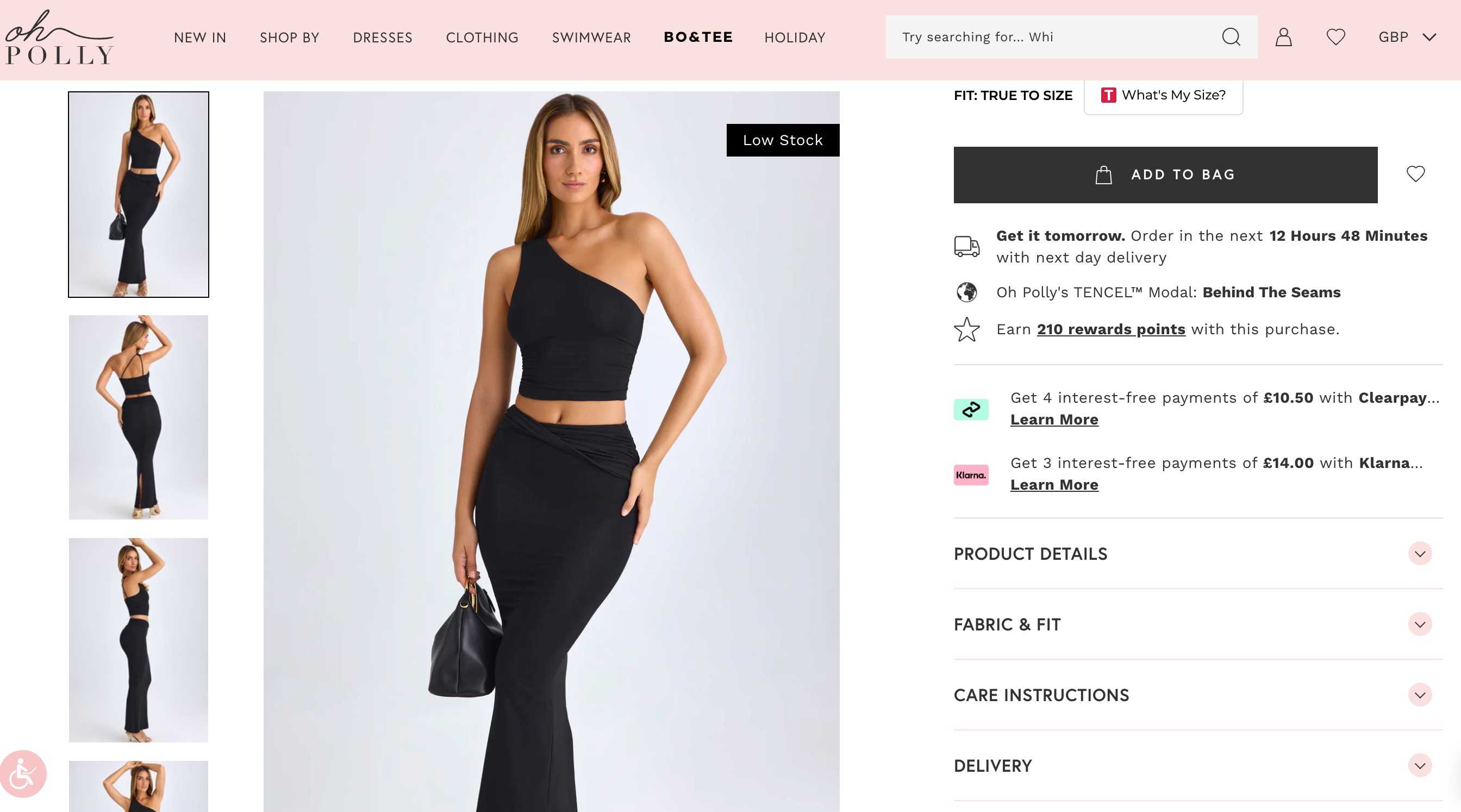
Considering the financial concerns of many in Gen Z, price sensitivity and value for money are important.
How to do that:
Provide exclusive discounts or loyalty rewards for younger consumers.
Introduce interest-free installment payment plans similar to Oh Polly’s approach, which allows customers to make purchases in smaller, manageable payments without additional cost.
Clearly communicate the availability of flexible payment options both on product pages and during the checkout process.
Partner with reliable payment platforms that support installment payments, such as Klarna or Afterpay, to ensure a smooth and trustworthy checkout experience for customers.
Use social media, email marketing, and website banners to actively promote your flexible payment options. Highlight how these can ease financial strain, particularly for high-value items.
Regularly assess customer satisfaction with your payment options and gather feedback through surveys or direct communication.
Foster Community and Peer Connections
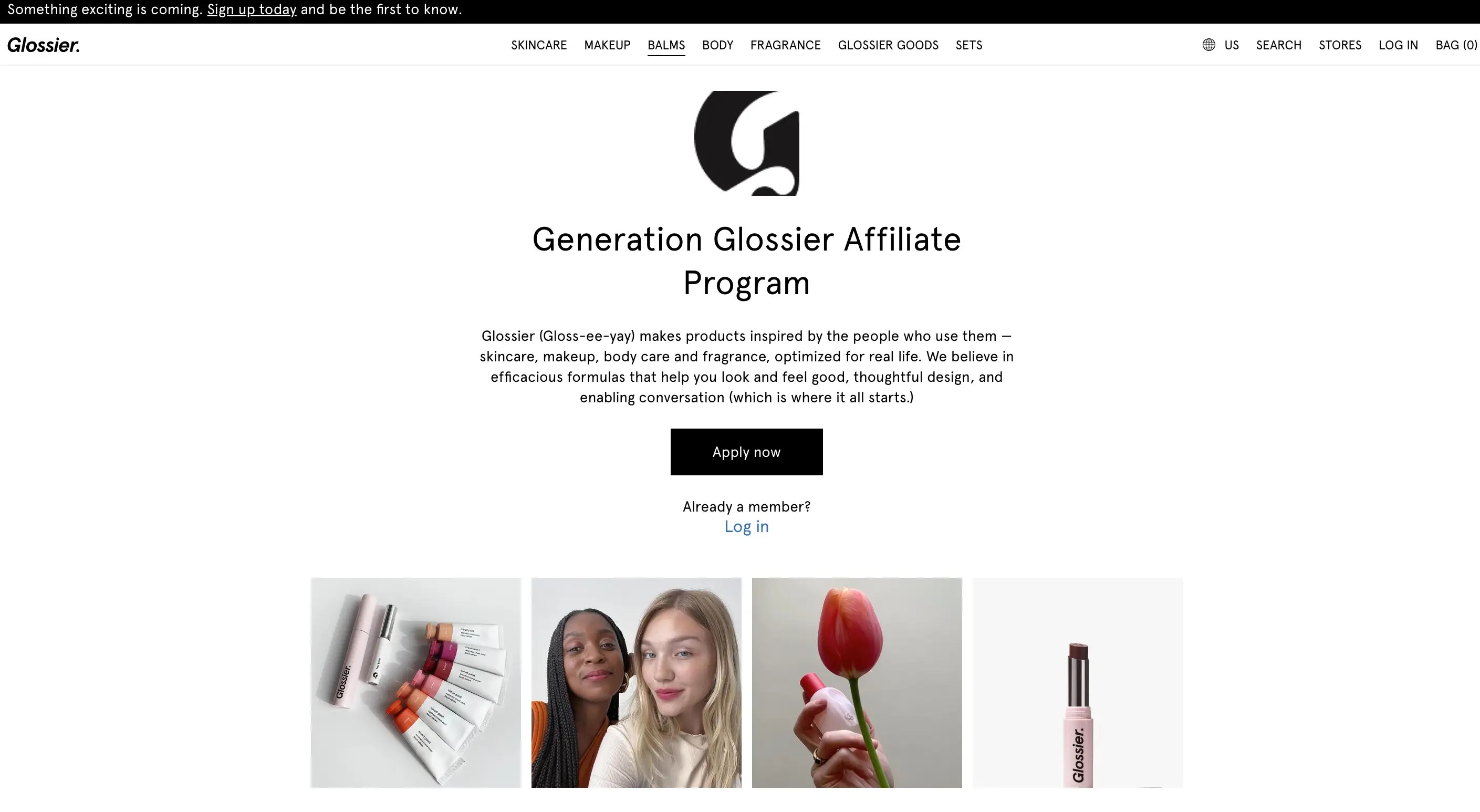
Gen Z values community and the opinions of their peers. To effectively engage them, it’s crucial to cultivate a vibrant community where peer interactions and personal connections thrive.
How to do that:
Initiate a program like Glossier’s, where engaged customers can become brand ambassadors. Provide them with the tools and incentives to create and share content that showcases your products in real life. This not only amplifies your reach but also builds trust through peer endorsements.
Actively use social media platforms to foster a sense of community. Encourage sharing, discussions, and user-generated content by reposting customer photos, stories, and reviews.
Organize events that allow for direct interaction with your brand. Whether these are virtual webinars, live Q&A sessions with product creators, or in-person meet-ups, make sure they reflect your brand’s values and resonate with Gen Z’s interests.
Motivate your customers to share their experiences with your products. This could be through challenges, competitions, or rewards for posting with your brand’s hashtag. User-generated content not only engages the existing community but also attracts new members by showcasing authentic experiences.
Create platforms or forums where customers can discuss their experiences, offer feedback, and ask questions. This could be on your website, social media, or through a dedicated app. Make sure these platforms are moderated to maintain positivity and constructiveness.
Regularly feature stories or testimonials from community members on your website and in your marketing materials. Highlight how the community benefits from your products or initiatives, reinforcing the communal bond.
FAQ: Marketing to Generation Z in 2025
Here are the most frequently asked questions about marketing to Gen Z in 2024:
What are the challenges of marketing to Gen Z?
The primary challenge of marketing to Gen Z lies in their high expectations for authenticity and social responsibility from brands.
They are highly skeptical of traditional advertising and can quickly detect inauthenticity.
Additionally, their constant connectivity means that they are bombarded with information, making it difficult for brands to cut through the noise.
Brands need to provide genuine value and align with Gen Z’s values to capture their attention and loyalty.
Does Gen Z like influencer marketing?
Yes, Gen Z generally responds well to influencer marketing, but with a caveat—they prefer influencers who are perceived as authentic and relatable.
They value influencers who share their personal stories, are transparent about their lives, and demonstrate a genuine connection with the brands they endorse.
Influencers who align with their values and engage in causes important to Gen Z tend to have more influence over their purchasing decisions.
What is the best social media to market to Gen Z?
TikTok and YouTube are currently the best social media platforms for marketing to Gen Z.
TikTok’s format of short, creative videos aligns perfectly with Gen Z’s preference for quick, entertaining content.
YouTube’s combination of entertainment, education, and influencer connections makes it a powerful platform for deeper engagement.
Both platforms offer unique opportunities for brands to create immersive and interactive content that can resonate with this demographic.
What percentage of the US population is made up of Gen Z in 2025?
Gen Z makes up slightly over 20% of the US population, making them a significant demographic in the consumer market.
What are the key characteristics of Gen Z’s online shopping behavior?
Gen Z sets trends in online shopping with their preferences for ethical brands, diversity, and digital engagement, with over 60% actively seeking sustainable products.
How does Gen Z’s diversity impact their consumer behavior?
Being the most racially and ethnically diverse generation, Gen Z values inclusivity and is more likely to support brands that mirror these principles in their practices and marketing.
What role does social media play in Gen Z’s purchasing decisions?
- 39% of female Gen Z consumers are influenced by TikTok.
- 57% discover new brands through YouTube.
- Social media significantly shapes their buying behavior, with platforms like TikTok seeing a 100% increase in usage for product information since 2020.
How important is mental health and well-being to Gen Z, and how does it affect their brand loyalty?
Over 60% of Gen Zers place a high importance on mental health and well-being, preferring to engage with brands that support mental health initiatives and demonstrate care for their customers’ well-being.
What percentage of Gen Z tries to buy secondhand before purchasing new items?
Over 60% of Gen Z shoppers look for an item secondhand before buying it new, emphasizing their preference for sustainable and economically sensible choices.
What kind of ads attract Gen Z?
Ads that attract Gen Z typically feature the following elements:
- Authenticity: Ads that show real-life scenarios or behind-the-scenes content.
- Engagement: Interactive content like polls, quizzes, and challenges that encourage participation.
- Values: Ads that highlight a brand’s commitment to social and environmental issues.
- Personalization: Content tailored to their interests and behavior.
- Visual and Creative Appeal: High-quality visuals and innovative designs that stand out on social media feeds.
Sources of Gen Z Statistics and Facts
Here are the sources used for statistics and facts:
- United States Census Buerau
- Statista
- Business Insider
- McKinsey
- Vogue Business
- Morning Consult
- Archrival
- Forbes
- Pew Research Center
- Spotify
Here are more ecommerce & marketing related content you may want to explore:

































